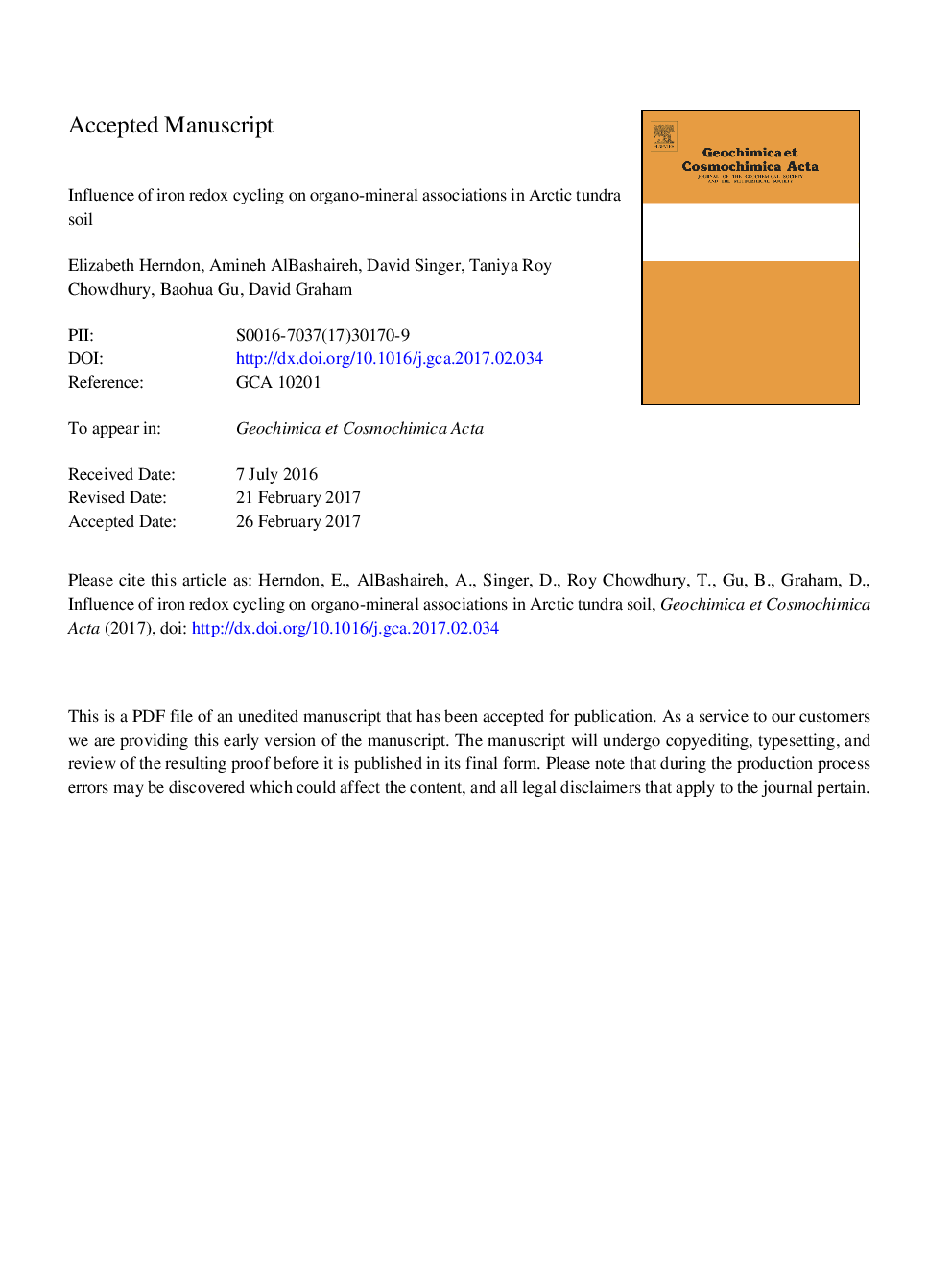| Article ID | Journal | Published Year | Pages | File Type |
|---|---|---|---|---|
| 5783526 | Geochimica et Cosmochimica Acta | 2017 | 50 Pages |
Abstract
We conclude that organic horizons were enriched in poorly crystalline and crystalline iron oxide phases derived from upward translocation of dissolved Fe(II) and Fe(III) from mineral horizons. Precipitation of iron oxides at the redox interface has the potential to contribute to mineral protection of organic matter and increase the residence time of organic carbon in arctic soils. Our results suggest that iron oxides may inhibit organic carbon degradation by binding low-molecular-weight organic compounds, stabilizing soil aggregates, and forming thick coatings around particulate organic matter. Organic matter released through acid-dissolution of iron oxides could represent a small pool of readily-degradable organic molecules temporarily stabilized by sorption to iron oxyhydroxide surfaces. The distribution of iron in organic complexes and inorganic phases throughout the soil column constrains Fe(III) availability to anaerobic iron-reducing microorganisms that oxidize organic matter to produce CO2 and CH4 in these anoxic environments. Future predictions of carbon storage and respiration in the arctic tundra should consider such influences of mineral stabilization under changing redox conditions.
Keywords
Related Topics
Physical Sciences and Engineering
Earth and Planetary Sciences
Geochemistry and Petrology
Authors
Elizabeth Herndon, Amineh AlBashaireh, David Singer, Taniya Roy Chowdhury, Baohua Gu, David Graham,
